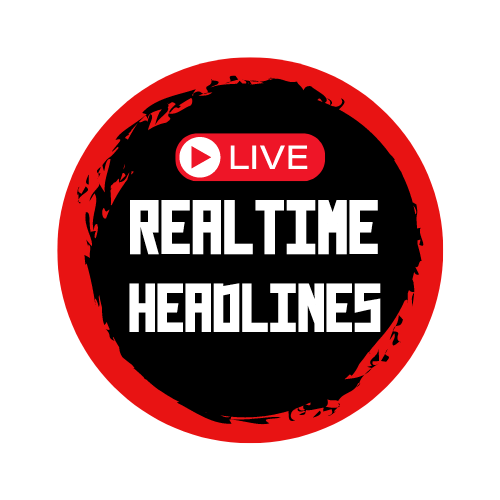Fed Chairman Jerome Powell testified ahead of the Senate Banking, Housing and Urban Affairs Committee on February 11, 2025 on Capitol Hill in Washington, U.S.
Craig Hudson | Reuters
Today, the popular narrative among Fed policymakers is that policies are “organized” to accommodate any upside risks in the future. However, it may be more accurate to say that the policy is in place.
As the economy and the vast amount of unknowns in the Washington Hall were spinning, the only gear the central bank really had in these days was neutral, as it began a reality that could be waited long for a certainty.
“In recent weeks, we have heard not only enthusiasm, especially from banks, but also shifts in tax and regulatory policies, but also broad concerns about future trade and immigration policies,” Atlanta Fed President Rafael Posticz, President of the Atlanta Federal Reserve (Raphael Bostic) in Blog Posts. “The complexity in these cross-flows in policy making is even more complex.”
Postic’s comments are in an active week with Wall Street’s “feeding” or chair policy meetings happening between Wall Street’s “feeding” or chairs Jerome PowellGovernor of the Central Bank and Regional President.
The spoken officials often describe policy as “good location” – the language is now the main part of post-conference statements. But they increasingly express caution about President Donald Trump’s fluctuations Positive trade and economic agendaand other factors that may affect the policy.

“Uncertainty” is an increasingly common theme. In fact, Bostic titled his Thursday blog post, “Uncertainty calls for caution, humility policy.” A day ago, the Federal Open Market Commission set Publish minutes From the meeting from January 28 to 29, more than a dozen mentions of uncertain climates document.
These minutes specifically cite “increased uncertainty regarding the scope, timing and potential economic impacts of possible changes in trade, immigration, fiscal and regulatory policies.”
The uncertainty factor is incorporated into the Fed’s decision in two ways: It’s Employment picturesthis is relatively stable, inflation, this is Always relaxing, but may rise again As consumers and business leaders are shocked by the impact tariffs may have on prices.
Missing target
The Fed set inflation at 2% with a 2% attitude, and this goal remains elusive.
“Currently, I see the risk of inflation tilting towards the target,” the Federal Reserve of St. Louis told reporters on Thursday. “My benchmark scenario is that inflation continues to trend towards 2%, providing monetary policy remains modestly limited, which will take time,” the Federal Reserve said. . I think it’s possible that inflation will remain high and active at a pace. … This is another option. The scenario is not a baseline scenario, but I’m paying attention to it.”
The surgical staff in Musalem’s comments are that the policy is “moderately restrictive”, which is where he believes the current Fed funding rate level is between 4.25% and 4.4.5%. Bostic is on the clear performance of the need to keep interest rates, but emphasizes that “this is not a time for complacency” and points out that “another threat to price stability may arise.”
Chicago Fed President Austan Goolsbee is considered one of the lowest hawkish FOMC members in terms of inflation, he has to measure in his assessment of tariffs and has not included a box office in CNBC. Post a comment, including where he thinks the rate should be. go.
“If you’re just thinking about tariffs, it depends on how many countries they are going to apply, and how many countries they will have, and the more it looks, the more nervous it’s shocking, the more nervous you should be,” Goulsby said.
Many risks in the future
But, more broadly, the January minutes show that a Fed, on the potential shock, is not interested in testing waters at any further rate transfer. The meeting summary clearly stated that committee members hoped that “more progress in inflation should be made before further adjustments to the target scope of federal funding rates.”
It’s not just tariffs and inflation to worry about.
The minutes described the risk of financial stability as “notable”, especially in the leverage sector and the long-term debt levels that banks bear.
The Peter G. Peterson Foundation said in a panel that prominent economist Mark Zandi said he was concerned about the dangers to the $46.2 trillion U.S. bond market.
“I think the biggest risk is selling out a big sell-out in the bond market,” said Zandi, chief economist at Moody’s Analytics. “The bond market is very fragile to me. The pipeline is broken. The main dealers don’t Keep up with outstanding debts.”
He added: “There are a lot of things together and I think sometime in the next 12 months we’re seeing a big sell-off in the bond market.”
In this climate, he said there are few opportunities for the Fed to lower interest rates – although market pricing could drop by half a percentage point by the end of the year.
Zandi said it was wishful thinking, considering the Fed had tariffs and other intangible assets on its head.
“I just can’t see the Fed lowering interest rates here until you have a better feeling about inflation returning to target,” he said. “The economy is in a pretty good position in 2025. It feels like it’s performing well. It should It’s possible to get through a lot of storms. But it feels like there are a lot of storms.”


